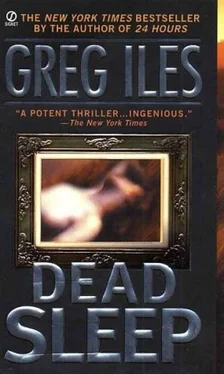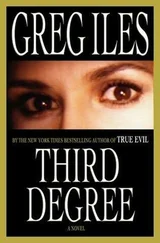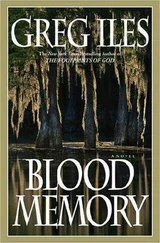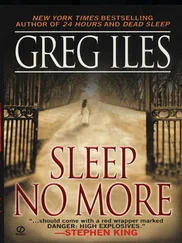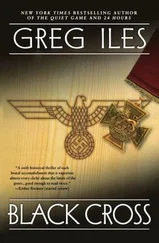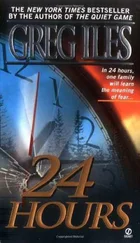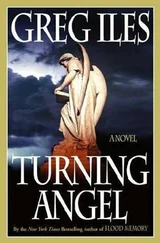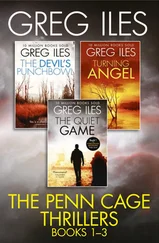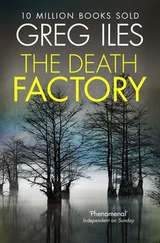“Like…?”
“Women taken from grocery stores, jogging paths, et cetera, snatched off the street without a trace, no witnesses, nothing. A professional feel to them, yet no obvious similarities between the victims.”
“Did you check it out?”
“I called some New York cops I knew from the Academy program and asked them to poke around their old files. It was asking a lot, but I had to do it.”
“Did you talk to the cop who showed you this woman?”
“No, that guy’s retired now. And nobody’s gotten back to me yet. But this woman…”
“You still remember her?”
“I told you before, I’ve got a knack for faces. This girl was pretty and young, and she stuck in my mind. That detective’s, too. She was his informant, now that I think about it. Will you bring me the cordless phone?”
I get him the phone, and he rings the field office, asking for Baxter.
“It’s John,” he says. “I think we caught a break… A big one. We need New York to liaise with NYPD in a big hurry…”
I sit on the edge of the bed and look at the Argus-generated portrait again. It’s a strangely nonhuman image, yet lifelike enough to pull a ten-year-old memory from John’s brain. I say a silent thank-you to the photographer who confided the existence of Argus to me.
“Jordan?” says John, hanging up the phone. “Do you know what this means?”
“It means my sister wasn’t victim number five. Whoever is behind this started taking women more than a decade ago. In New York.”
He squeezes my arm. “We’re close now. Really close.”
I’m lying in John’s tub, soaking in hot water up to my neck, a pleasure I managed by jamming plastic wrap into the slits in the side of the circular metal thing that operates the drain. The glass bricks above me have slowly turned from black to blue with the coming dawn, and while I don’t feel rested, I do feel less frazzled than I did yesterday.
Last night passed in a flurry of confusion, elation mingled with depression, like sugar highs punctuated by exhaustion. Prompted by John’s recognition of the Argus photo, Daniel Baxter rousted the midnight homicide shifts at the NYPD. Using Argus-enhanced photos of the abstract Sleeping Women paintings, New York detectives managed to identify six of the eight unidentified victims in the NOKIDS case.
Once the women were identified, the story came together by itself. Between 1979 and 1984, a serial kidnap-murderer was operating in New York City area without anyone connecting more than three of his crimes. His victims were prostitutes and hitchhikers – neither category high on the NYPD’s list of priorities. The significance of this discovery was simple and devastating: the painter of the Sleeping Women had not begun his work two years ago in New Orleans, but more than twenty years ago in New York.
The ramifications were more complex. First, our youngest suspect, Frank Smith, had been only fifteen years old at the time. This alone did not exonerate him, but it shifted the focus of the investigation away from him. Second, not one Sleeping Woman had been sold at the time of the New York murders. Third, why would a serial killer murder eight women and then suddenly stop? In John’s experience, only prison or death stopped serial murderers from pursuing their work. But most puzzling was why, having stopped, the murderer would resume his work fifteen years later. Had he been locked up for a decade and a half, only to emerge as hungry for victims as before?
John drank nonstop cups of coffee to fight the sedative effects of his painkillers, and sat on the sofa working out theory after theory in an attempt to fit the new parameters of the case. Too exhausted to be any use to him, I went into the bathroom, took three Xanax, and got into bed.
Sleep came quickly, but that was no blessing. With sleep came dreams. All the fantastic input of the past seven days had been brewing in my subconscious, and it finally burst free with a vengeance. Most of the images I can’t remember, but one remains clear: I’m standing at the center of Roger Wheaton’s room-sized masterpiece, a circular canvas that’s no canvas at all, but a universe of forest and earth and stream and sky. Peering out at me from the twisted tree roots are shadowy grinning faces: Leon Gaines, his eyes blazing with lust; the murderous UNSUB on the levee; and capering through the trees like a beautiful demon, Frank Smith, naked, chasing Thalia Laveau, who struggles to keep a white robe from falling as she runs. The scene whirls around me like a Hieronymous Bosch nightmare while I stand transfixed, the floor under my feet flowing like a stream, and reflected in the stream, the face of my father.
That dream soon flowed into another, but I can’t remember it. Sometime during the night, John began kissing me. Only half asleep, I started awake, but when I recognized his face, my heartbeat slowed and my fear abated. I made sure he was wearing something, then pulled him over and let him move slowly inside me until he shuddered and collapsed. I was asleep before he rolled off me, caught again in a spiraling descent into flashing darkness.
The phone rang ceaselessly for most of the night, and even in my sedated state, I stirred at every ring, fearing dreadful news. It finally stopped around four, and John fell into a deep sleep. Now, with the coming of dawn, it begins again. I’d like to let John rest, but I’m not getting out of this delicious water to talk to some homicide cop from Queens.
After three rings, the bedsprings groan and a hoarse voice says, “Kaiser.” After a few moments, he says, “When?… Where?… Right. I’m on my way.”
After ten seconds of thrashing in the bedcovers and grunting in pain, John limps into the bathroom, his hair a mess but his eyes alert. “A pushboat crew just fished the UNSUB’s body out of the river, five miles downstream from where he went in.”
Adrenaline flushes through me in a dizzying rush. I get to my feet and snatch a towel from the rack.
“Baxter choppered a forensic team down to the site to fingerprint the corpse. They’ll be back at the office before we can get across the causeway.”
“How’s your leg?”
“It’s still there. Get dressed. We’re about to meet the man who tried to kidnap you.”
***
Baxter and Lenz are standing in the main computer room with coffee cups in their hands when we arrive at the field office. Three technicians wearing headsets sit before a bank of computer terminals with continuously changing data, while above them large CRTs show live TV of every possible approach to the field office.
“You broke some speeding laws getting here,” Baxter says to me, but he winks at John. “Chopper got the prints here five minutes ago. They’re already in IAFIS.”
IAFIS, as John explained on the way over, is the Integrated Automated Fingerprint System, a database of over two hundred million fingerprints.
“Our priority bumped everything in the queue,” says Baxter. “If there’s a match, we’ll have it any second.”
Dr. Lenz says, “When I started consulting, they did this job with note cards.”
“Where’s the body?” asks John.
“Going to the Orleans Parish morgue. Looked like four bullet wounds.”
“Sir?” says a female technician, looking up at Baxter. “We have a match. One hundred percent.”
The technician flicks her trackball and clicks a button. On her CRT, one large fingerprint superimposes upon another with near-perfect accuracy.
“Whose finger is that?” asks Baxter as we crowd around the screen.
The tech clicks again, and a criminal record pops onto the screen. In the top right-hand corner is a photograph, the face in it a younger version of the man who shot Wendy on the levee yesterday.
Читать дальше
Конец ознакомительного отрывка
Купить книгу
